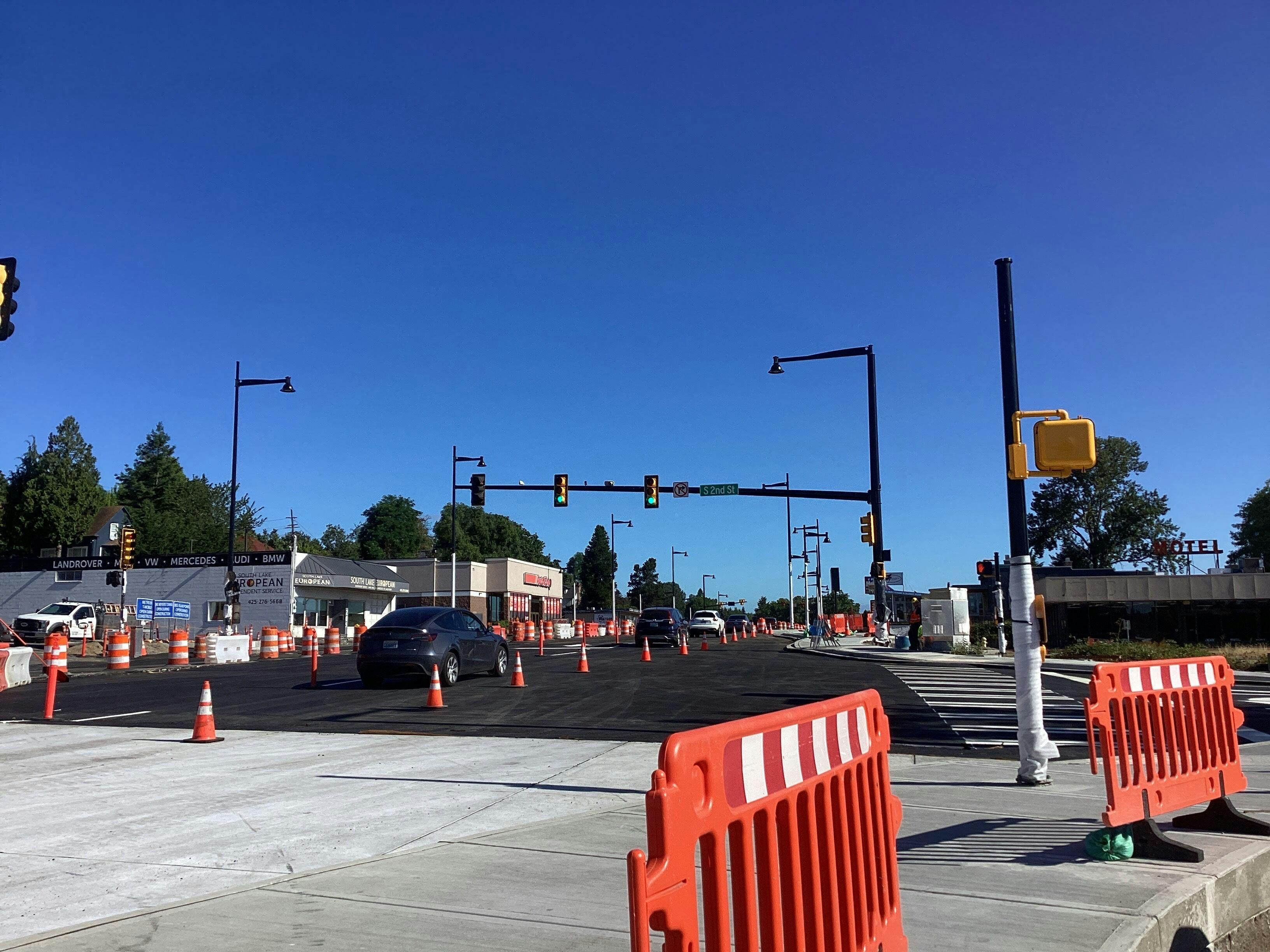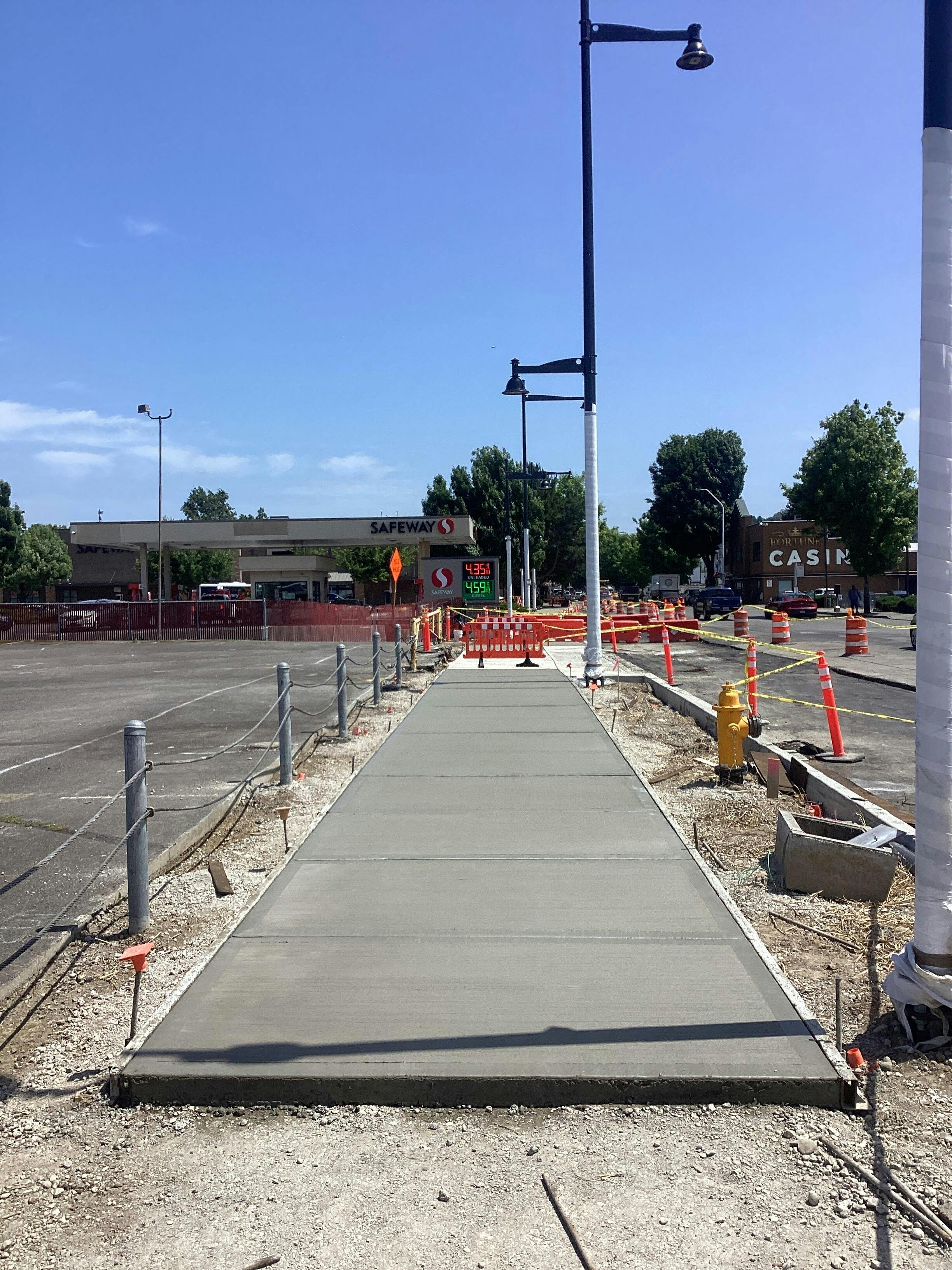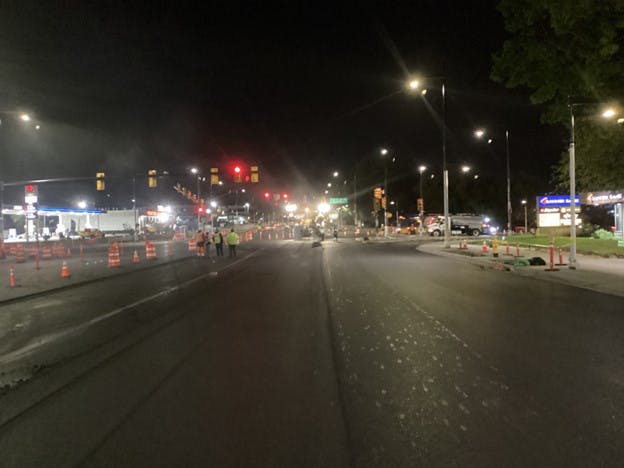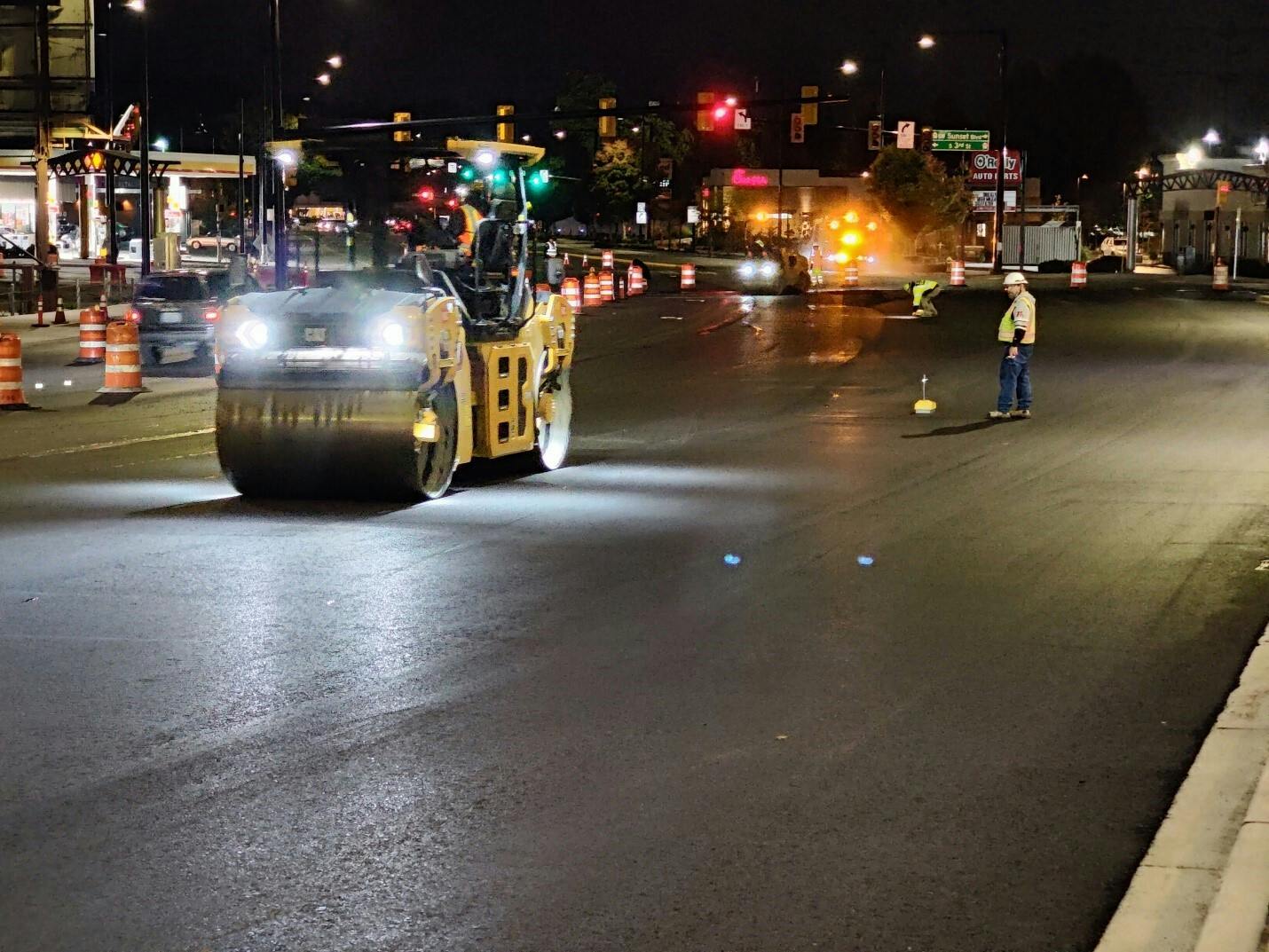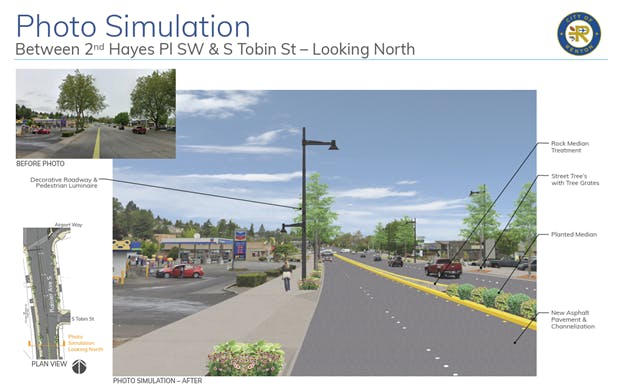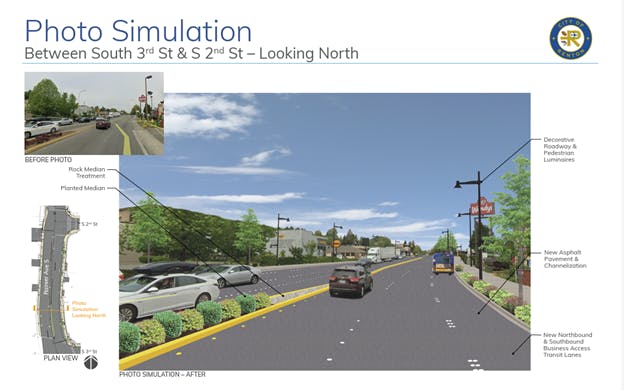Rainier Avenue South Phase 4
Rainier Avenue South is a critical regional transit corridor. It manages high transit use and pedestrian and cyclist traffic volumes daily.
The project enhances overall functionality to support traffic demands, improve walkability, and provide transit access without compromising traffic flow.
A project at this scale requires a phased approach over several years, with the primary challenge being securing funding.
When grant funding was awarded to the projects, the city could take action on Phase 4 of Rainier, which focuses on safety, improving traffic flow, and access.
Safety for walkers and bicyclists with wider sidewalks and new bike lanes. Safety for drivers trying to get in and out of businesses. Access for transit, walkers, and bicyclists to make stops or access businesses without resulting in traffic delays or collisions.
After Phase 4, expect to see:
- Sidewalk widening with streetscaping
- Pedestrian-scale lighting
- Extension of the Lake Washington Loop Trail
- Pedestrian-activated traffic signals
- Upgrading existing traffic signals
- Transit improvements, including an extended Business Access and Transit lane (BAT lane)
- Planted buffer strips and landscaped medians
Please note: Paving work is subject to weather conditions. Local access will be maintained during these temporary closures, and temporary barricades will be set up for safe passage.
Lane closures will increase significantly as embankment and phases of construction continue.
Additional traffic updates
For all traffic impacts for the week, visit rentonwa.gov/traffic. As part of the I-405/Renton to Bellevue Widening project, Washington State Department of Transportation (WSDOT) has several closures this summer that may impact overall traffic flow, visit WSDOT’s webpage for upcoming closures on I-405.
Project status
- Traffic signal was added and turned on at Airport Way (May 2025)
- HAWK signals added and turned at the below locations at Victoria and NW 3rd Pl. (May 2025)
- Traffic signal was added and turned on at S. 3rd St. (July 2025)
- Traffic signal was added and turned on at S. 2nd St. (July 2025)
- Paving along S. 2nd St. complete (July 2025)
- Concrete panels over Seattle Public Utilities transmission lines complete (September 2025)
- Paving (October 2025)
Rainier Avenue South is a critical regional transit corridor. It manages high transit use and pedestrian and cyclist traffic volumes daily.
The project enhances overall functionality to support traffic demands, improve walkability, and provide transit access without compromising traffic flow.
A project at this scale requires a phased approach over several years, with the primary challenge being securing funding.
When grant funding was awarded to the projects, the city could take action on Phase 4 of Rainier, which focuses on safety, improving traffic flow, and access.
Safety for walkers and bicyclists with wider sidewalks and new bike lanes. Safety for drivers trying to get in and out of businesses. Access for transit, walkers, and bicyclists to make stops or access businesses without resulting in traffic delays or collisions.
After Phase 4, expect to see:
- Sidewalk widening with streetscaping
- Pedestrian-scale lighting
- Extension of the Lake Washington Loop Trail
- Pedestrian-activated traffic signals
- Upgrading existing traffic signals
- Transit improvements, including an extended Business Access and Transit lane (BAT lane)
- Planted buffer strips and landscaped medians
Please note: Paving work is subject to weather conditions. Local access will be maintained during these temporary closures, and temporary barricades will be set up for safe passage.
Lane closures will increase significantly as embankment and phases of construction continue.
Additional traffic updates
For all traffic impacts for the week, visit rentonwa.gov/traffic. As part of the I-405/Renton to Bellevue Widening project, Washington State Department of Transportation (WSDOT) has several closures this summer that may impact overall traffic flow, visit WSDOT’s webpage for upcoming closures on I-405.
Project status
- Traffic signal was added and turned on at Airport Way (May 2025)
- HAWK signals added and turned at the below locations at Victoria and NW 3rd Pl. (May 2025)
- Traffic signal was added and turned on at S. 3rd St. (July 2025)
- Traffic signal was added and turned on at S. 2nd St. (July 2025)
- Paving along S. 2nd St. complete (July 2025)
- Concrete panels over Seattle Public Utilities transmission lines complete (September 2025)
- Paving (October 2025)
-
December 3 Weekly Rainier Ave. S. Project Update
Share December 3 Weekly Rainier Ave. S. Project Update on Facebook Share December 3 Weekly Rainier Ave. S. Project Update on Twitter Share December 3 Weekly Rainier Ave. S. Project Update on Linkedin Email December 3 Weekly Rainier Ave. S. Project Update linkEach day, we inch closer and closer to the completion of Rainier Ave. S. Phase 4. Here is what is happening:
- Grading and paving of driveways
- Irrigation and landscaping
- Striping
- Median installation
Please follow all pedestrian and traffic controls as work progresses.
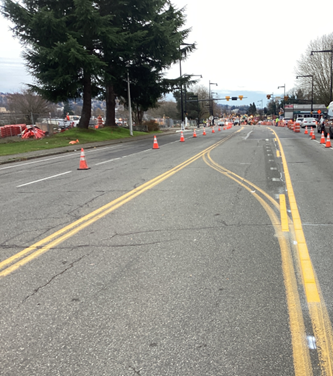
The main contractor is onsite during working hours (Monday to Friday). A project of this scale requires multiple trades such as electricians, landscapers, and plumbers, all working on different schedules.
Road Closures
Intermittent closures for striping will occur on side streets through Friday, December 5, including S. 2nd St, Tobin St, Victoria St, Hayes Pl, Nelson Pl NW, and NW 3rd Pl.Full details available here: Look Ahead Schedule(PDF, 87KB) (updated 12/1/2025)
-
November 21 Weekly Rainier Ave. S. Project Update
Share November 21 Weekly Rainier Ave. S. Project Update on Facebook Share November 21 Weekly Rainier Ave. S. Project Update on Twitter Share November 21 Weekly Rainier Ave. S. Project Update on Linkedin Email November 21 Weekly Rainier Ave. S. Project Update linkEach day, we inch closer and closer to the completion of Rainier Ave. S. Phase 4. Here is what is happening, and what to expect for the duration of the project:
- No more night work
- Crews are back to median work today
- Almost all driveways have been paved
- Crews continue to finalize all grading, sidewalks, pads, and concrete work along the corridor
- Landscaping is in progress
- Striping and signage will be completed within the next couple of weeks
The main contractor is always onsite during working hours (Monday to Friday). A project of this scale requires multiple trades such as electricians, landscapers, and plumbers, all working on different schedules.
Road Closures
Intermittent closures for striping will occur on side streets from November 24 to December 5, including S. 2nd St., Tobin St., Victoria St, Hayes Pl., Nelson Pl. NW, and NW 3rd Pl.No work will take place on Thursday and Friday, November 27 and 28, in observance of the Thanksgiving holiday.
-
November 5 Weekly Rainier Ave. S. Project Update
Share November 5 Weekly Rainier Ave. S. Project Update on Facebook Share November 5 Weekly Rainier Ave. S. Project Update on Twitter Share November 5 Weekly Rainier Ave. S. Project Update on Linkedin Email November 5 Weekly Rainier Ave. S. Project Update linkTraffic impacts
No upcoming road closures are scheduled for next week.
Full schedule available here: Rainier Ave Full Schedule(PDF, 604KB) - Last update: 4/1/2024
Project work update
Nighttime work will continue through next week to complete utility adjustments and sanitary sewer lining. Uniformed Police Officers (UPOs) are stationed as needed at intersections for traffic control. Please use extra caution when traveling through the work zone, especially at night.
Weather permitting, crews may complete striping and pavement markings at night the week of November 17. No road closures are expected.
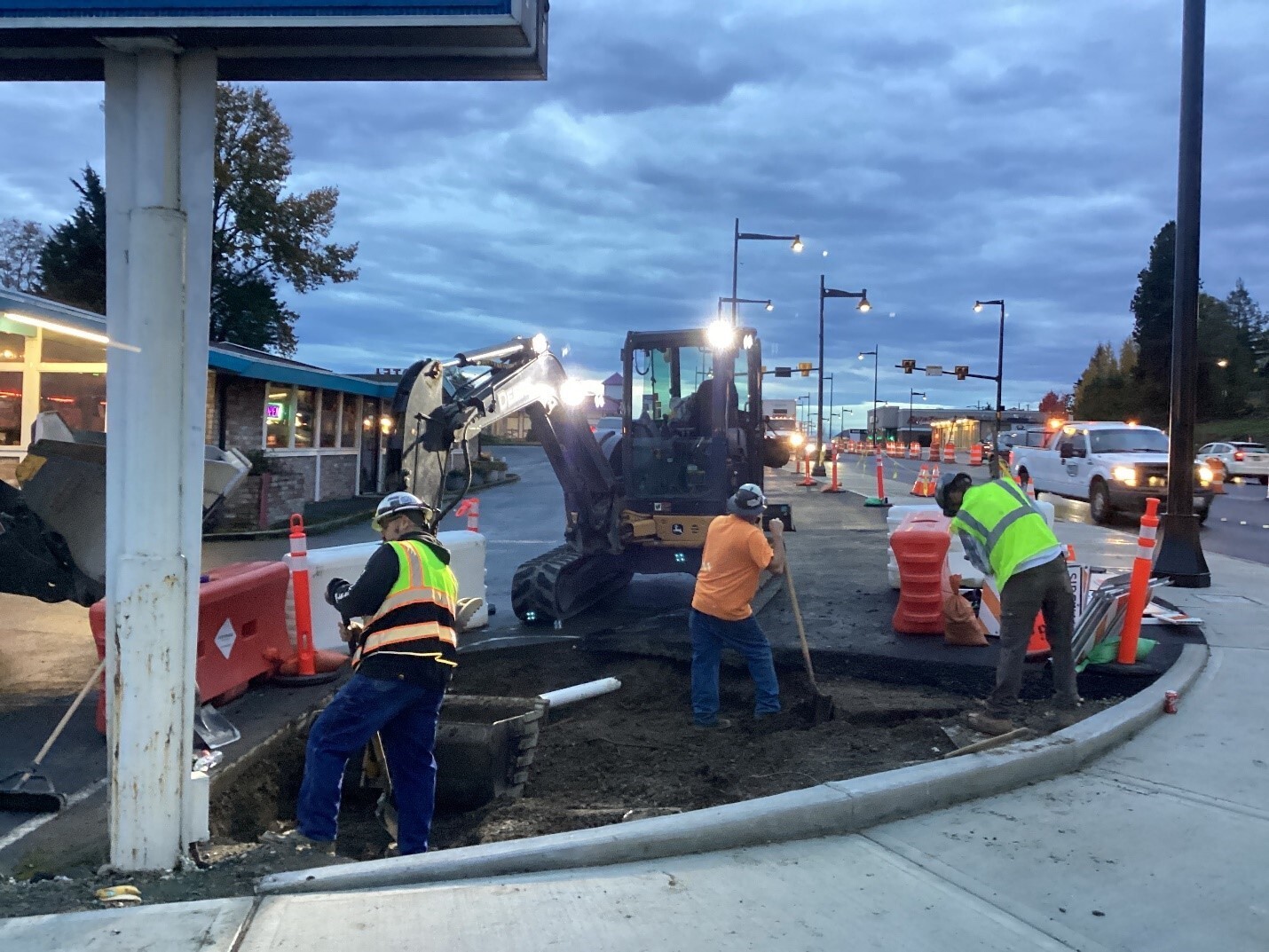
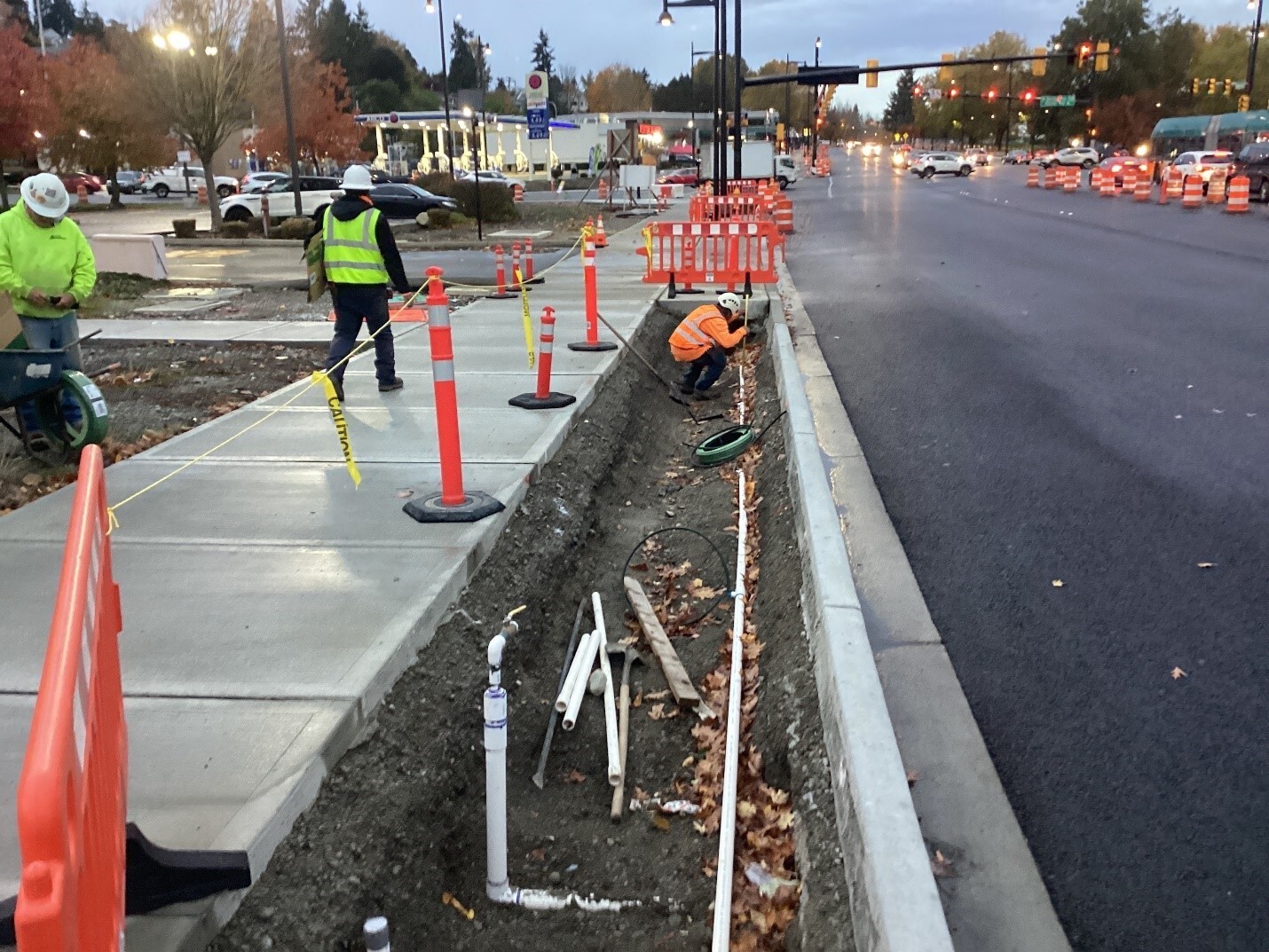
Project look-ahead schedule
-
November
- Grading and paving of driveways
- Sidewalks, pads, and concrete work along the corridor
- Median and intersection work
- Irrigation
- Striping
- Landscaping, including installation of trees, lawns, and planting beds
Full details available here: Look Ahead Schedule(PDF, 87KB) (updated 10/29/2025)
-
November
-
October 31 Weekly Rainier Ave. S. Project Update
Share October 31 Weekly Rainier Ave. S. Project Update on Facebook Share October 31 Weekly Rainier Ave. S. Project Update on Twitter Share October 31 Weekly Rainier Ave. S. Project Update on Linkedin Email October 31 Weekly Rainier Ave. S. Project Update linkTraffic impacts
No upcoming road closures are scheduled for next week, Night work will resume in November for striping.
Full schedule available here: Rainier Ave Full Schedule(PDF, 604KB) - Last update: 4/1/2024
Project work update
Nighttime construction has ceased for the time being as the final paving and overlay for roads have been completed. It will resume in November for final striping.
Median work is in progress and will continue into the next few weeks.
As outlined in the initial project plan for Phase 4, new traffic curbs and medians will be installed, and some access points may be modified accordingly. Similar to those already in place at Rainier Ave S. and Airport Way, these are designed to improve safety by limiting left turns, while still allowing U-turns at signalized intersections.


Project look-ahead schedule
-
October
- Installation of traffic medians
- Grading and paving of driveways
-
November
- Striping
- Landscaping, including installation of trees, lawns, and planting beds
Full details available here: Look Ahead Schedule(PDF, 87KB) (updated 10/29/2025)
-
October
-
October 23 Weekly Rainier Ave. S. Project Update
Share October 23 Weekly Rainier Ave. S. Project Update on Facebook Share October 23 Weekly Rainier Ave. S. Project Update on Twitter Share October 23 Weekly Rainier Ave. S. Project Update on Linkedin Email October 23 Weekly Rainier Ave. S. Project Update linkFinal paving is complete! There will be no further nighttime construction through the end of the month, but it will begin again in November.
Road impacts
Currently, no road closures are expected.
Nighttime construction update
Nighttime construction has ceased for the time being as the final paving and overlay for roads have been completed. It will resume in November for final striping.
Project look-ahead schedule
-
October
- Installation of traffic medians
- Grading and paving of driveways
-
November
- Striping
- Landscaping, including installation of trees, lawns, and planting beds
Full details available here: Look Ahead Schedule(PDF, 89KB) (updated 10/22/2025)
-
October
-
October 16 Weekly Rainier Ave. S. Project Update
Share October 16 Weekly Rainier Ave. S. Project Update on Facebook Share October 16 Weekly Rainier Ave. S. Project Update on Twitter Share October 16 Weekly Rainier Ave. S. Project Update on Linkedin Email October 16 Weekly Rainier Ave. S. Project Update linkFinal paving is complete! There will be no further nighttime construction through the end of the month, but it will begin again in November.
Road impacts
- Intermittent nighttime closures continue at S. 2nd St, Tobin St, Victoria St, Hayes Pl, Nelson Pl NW, and NW 3rd Pl. Intermittent nighttime closures for final paving and asphalt overlay began on Monday, September 22.
- Uniformed Police Officers (UPOs) will be on site as needed at intersections from 8 p.m. to 5 a.m. to assist with traffic flow
Please note: Paving work is subject to weather conditions. Local access will be maintained during these temporary closures, and temporary barricades will be set up for safe passage.
Full schedule available here: Rainier Ave Full Schedule(PDF, 604KB) - Last update: 4/1/2024
Nighttime work update
Nighttime construction has ceased for the time being as the final paving and overlay for roads have been completed. It will resume in November for final striping.
Project look-ahead schedule
-
September
- Nighttime final paving and asphalt overlay along the corridor and side streets
- Grading and paving of driveways
-
October-November
- Nighttime final paving and asphalt overlay
- Installation of traffic medians
- Striping
- Landscaping, including installation of trees, lawns, and planting beds
Full details available here: Look Ahead Schedule(PDF, 89KB) (updated 10/15/2025)
-
October 10 Weekly Rainier Ave. S. Project Update
Share October 10 Weekly Rainier Ave. S. Project Update on Facebook Share October 10 Weekly Rainier Ave. S. Project Update on Twitter Share October 10 Weekly Rainier Ave. S. Project Update on Linkedin Email October 10 Weekly Rainier Ave. S. Project Update linkNighttime final paving and asphalt overlay is 90% complete! See night work in action!
Road impacts
- Intermittent nighttime closures continue at S. 2nd St, Tobin St, Victoria St, Hayes Pl, Nelson Pl NW, and NW 3rd Pl. Intermittent nighttime closures for final paving and asphalt overlay began on Monday, September 22.
- Uniformed Police Officers (UPOs) will be on site as needed at intersections from 8 p.m. to 5 a.m. to assist with traffic flow
Please note: Paving work is subject to weather conditions. Local access will be maintained during these temporary closures, and temporary barricades will be set up for safe passage.
Nighttime work
Nighttime construction for the final paving and asphalt overlay began on September 22 and will continue through mid-October. See FAQs on project page for what to expect during night work.
Project look-ahead schedule
-
September
- Nighttime final paving and asphalt overlay along the corridor and side streets
- Grading and paving of driveways
-
October-November
- Nighttime final paving and asphalt overlay
- Installation of traffic medians
- Striping
- Landscaping, including installation of trees, lawns, and planting beds
Full details available here: Look Ahead Schedule(PDF, 90KB) (updated 10/9/2025)
-
October 6 Weekly Rainier Ave. S. Project Update
Share October 6 Weekly Rainier Ave. S. Project Update on Facebook Share October 6 Weekly Rainier Ave. S. Project Update on Twitter Share October 6 Weekly Rainier Ave. S. Project Update on Linkedin Email October 6 Weekly Rainier Ave. S. Project Update linkRoad impacts
- Intermittent nighttime closures continue at S. 2nd St, Tobin St, Victoria St, Hayes Pl, Nelson Pl NW, and NW 3rd Pl. Intermittent nighttime closures for final paving and asphalt overlay began on Monday, September 22.
- Uniformed Police Officers (UPOs) will be on site as needed at intersections from 8 p.m. to 5 a.m. to assist with traffic flow
Please note: Paving work is subject to weather conditions. Local access will be maintained during these temporary closures, and temporary barricades will be set up for safe passage.
Nighttime work
Nighttime construction for the final paving and asphalt overlay began on September 22 and will continue through mid-October. See FAQs on project page for what to expect during night work.
Project look-ahead schedule
-
September
- Nighttime final paving and asphalt overlay along the corridor and side streets
- Grading and paving of driveways
-
October
- Nighttime final paving and asphalt overlay
- Installation of traffic medians
- Striping
- Landscaping, including installation of trees, lawns, and planting beds
Full details available here: Look Ahead Schedule(PDF, 87KB) (updated 9/24/2025)
-
September 24 Weekly Rainier Ave. S. Project Update
Share September 24 Weekly Rainier Ave. S. Project Update on Facebook Share September 24 Weekly Rainier Ave. S. Project Update on Twitter Share September 24 Weekly Rainier Ave. S. Project Update on Linkedin Email September 24 Weekly Rainier Ave. S. Project Update linkRoad impacts
- S. 2nd St, Tobin St, Victoria St, Hayes Pl, Nelson Pl NW, and NW 3rd Pl. Intermittent nighttime closures for final paving and asphalt overlay began on Monday, September 22.
- Uniformed Police Officers (UPOs) will be on site as needed at intersections from 8 p.m. to 5 a.m. to assist with traffic flow
Please note: Paving work is subject to weather conditions. Local access will be maintained during these temporary closures, and temporary barricades will be set up for safe passage.
Nighttime work
Nighttime construction for the final paving and asphalt overlay began on September 22 and will continue through mid-October. The overlay adds a smooth top layer that evens out the surface, improves ride quality, and helps protect the roadway for years to come.
Drivers should follow posted signs and closures and use extra caution when traveling through the area at night.
Project look-ahead schedule
-
September
- Nighttime final paving and asphalt overlay along the corridor and side streets
- Grading and paving of driveways
-
October
- Nighttime final paving and asphalt overlay
- Installation of traffic medians
- Striping
- Landscaping, including installation of trees, lawns, and planting beds
Full schedule available here: Rainier Ave Schedule Update(PDF, 604KB) (updated 9/24/2025)
-
September 17 Weekly Rainier Ave. S. Project Update
Share September 17 Weekly Rainier Ave. S. Project Update on Facebook Share September 17 Weekly Rainier Ave. S. Project Update on Twitter Share September 17 Weekly Rainier Ave. S. Project Update on Linkedin Email September 17 Weekly Rainier Ave. S. Project Update linkRoad impacts
- S. 2nd St, Tobin St, Victoria St, Hayes Pl, Nelson Pl NW, and NW 3rd Pl. Intermittent nighttime closures for final paving and asphalt overlay as soon as Monday, September 22.
- Uniformed Police Officers (UPOs) will be on site at intersections from 8 p.m. to 5 a.m. to assist with traffic flow
Please note: Paving work is subject to weather conditions. Local access will be maintained during these temporary closures, and temporary barricades will be set up for safe passage.
Night work
Nighttime construction for the final paving and asphalt overlay will occur from September 22 through mid-October. The overlay adds a smooth top layer that evens out the surface, improves ride quality, and helps protect the roadway for years to come.
Drivers should follow posted signs and closures and use extra caution when traveling through the area at night.
Project look-ahead schedule
-
September 15 - 22
- Final paving and asphalt overlay along the corridor and side streets
- Grading and paving of driveways
-
September 22
- Nighttime final paving and asphalt overlay
-
Mid-October
- Nighttime final paving and asphalt overlay
Full schedule available here: Rainier Ave Schedule Update(PDF, 604KB)
Follow Project
Who's Listening
-
Civil Engineer 3 / Project Manager

-
Hotline

Phone 425-224-2446 Email info@rainierconstruction.org
Key Dates
-
January 2004
-
October 2019
-
April 2020
-
April 2022
-
June 2022
Videos
-
 Click here to play video
Rainier Ave. Phase 4
80+ years ago, Rainier Avenue was initially the only access point for Boeing to transport materials to and from its headquarters. Today, it is a regional corridor that will be safer, help with congestion, and accessible for walkers, bikers, and metro riders before the end of 2025.
Click here to play video
Rainier Ave. Phase 4
80+ years ago, Rainier Avenue was initially the only access point for Boeing to transport materials to and from its headquarters. Today, it is a regional corridor that will be safer, help with congestion, and accessible for walkers, bikers, and metro riders before the end of 2025.
-
Click here to play video Nighttime paving in action Watch crews getting things done! Paving is 90% complete which means the project is near the final stages.


